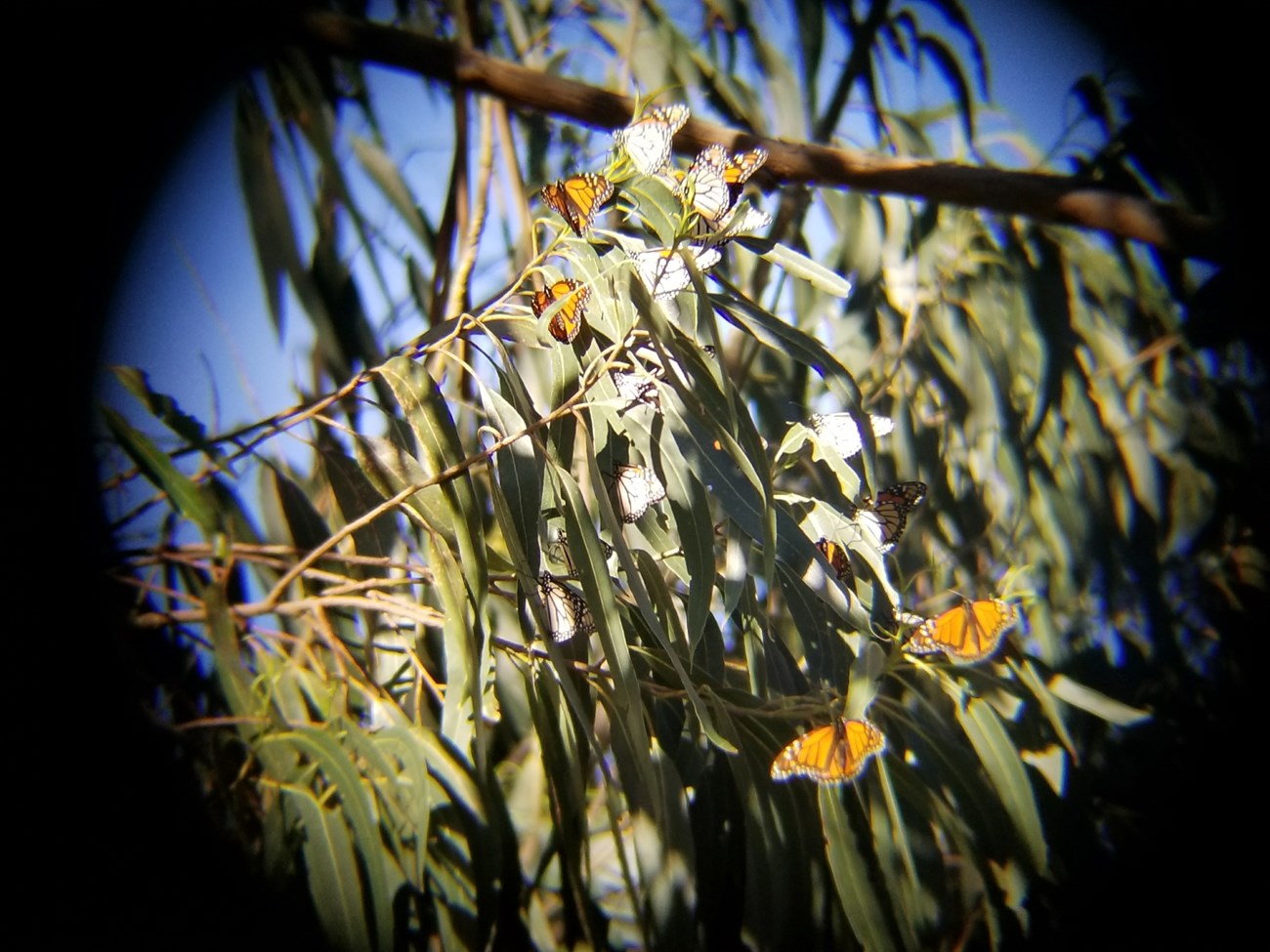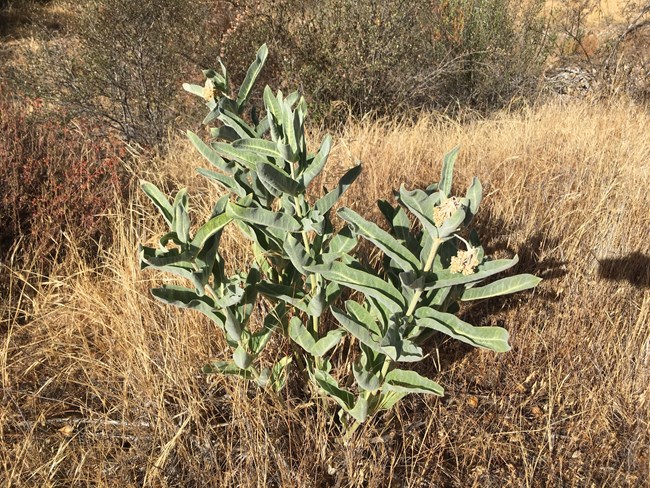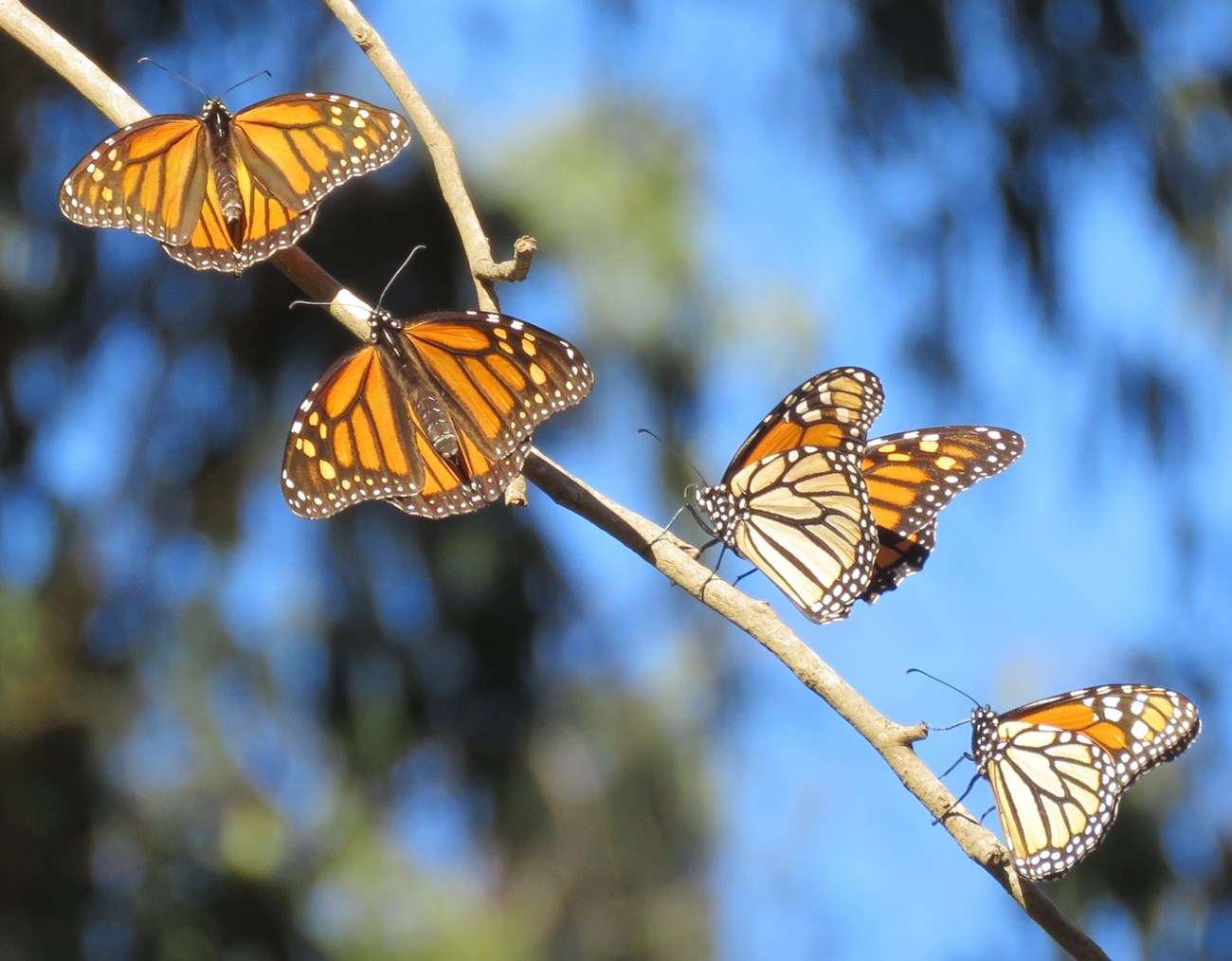Last updated: February 28, 2019
Article
National Parks Pitch In to Help Save Monarch Butterflies

Fue Her / Photo 12116158 / 2017-11-29 / iNaturalist.org / CC-BY
February 2019 - As scientists and community scientists (sometimes called citizen scientists) have noted, insect populations are plummeting across the globe. Monarch butterfly populations are no exception. Recent counts show that the western population has experienced a precipitous drop. As of 2018, the population of monarchs overwintering along the California coast stands at just 0.6% of what it was in the 1980s. Over 20 years of data gathered by volunteer community scientists contributed to that assessment.
Although the situation is dire for western monarchs, news on the eastern population has been a bit more hopeful. That population, which overwinters in Mexico, is also on the decline. But last year it bounced back to the size that it was 10 years ago. This could be because breeding, migration, and overwintering conditions lined up very well for monarchs last year. So scientists caution that the bump may be more of a blip than a recovery. Still, it shows that improving conditions for the butterflies can make a difference for their survival.

Paul G. Johnson / Photo 12708687 / 2017-9-21 / iNaturalist.org / CC BY-NC-SA
Also hopeful is that national parks have been taking action to support monarchs in all kinds of ways. Most relate to milkweed, the only plant that monarch larvae can eat. For example, Pinnacles National Park and John Muir National Historic Site have included milkweed in their restoration plans. Yosemite Valley's meadow restorations also prominently featured milkweed. Others, like Shenandoah National Park, strategically changed their mowing schedules to support milkweed patches along roadsides.
Golden Gate National Recreation Area and the Presidio focus their efforts on another monarch need: good overwintering habitat. Complicating things is that the monarchs in these parks overwinter in invasive eucalyptus groves - groves that also threaten endangered species habitat. To balance these competing concerns, the parks focus on groves at Fort Baker and at the Presidio's Rob Hill. These eucalyptus groves can serve double duty. They are key parts of the parks' cultural landscapes as well as valuable monarch habitat. So, guided by monarch experts, the parks are working to ensure that the conditions (e.g. temperature and wind) in the groves are as ideal as possible.

Liam O'Brien / Photo 2676656 / 2015-11-19 / iNaturalist.org / CC BY-NC
While these efforts are crucial, more action is needed to support monarchs throughout their life cycles. The Xerces Society Monarch Call to Action webpage is full of great resources for organizations and individuals, whether you want to learn learn how to manage a butterfly grove, or find the right milkweed seeds to plant for your area.
If butterfly counts are more your style, visit the Western Monarch Count website to learn about the next opportunity to volunteer. Want to keep in touch with the outdoors while also contributing to vital monarch research all year round? Look out for butterflies and milkweed, and report your sightings using tools like the Western Monarch Milkweed Mapper or iNaturalist.
Questions? Reach out to Mia Monroe to learn more.
